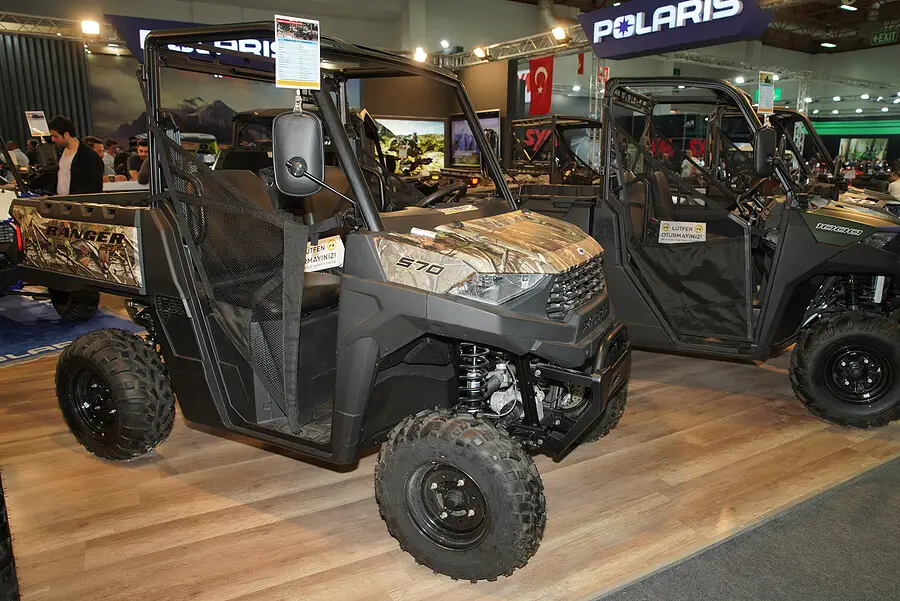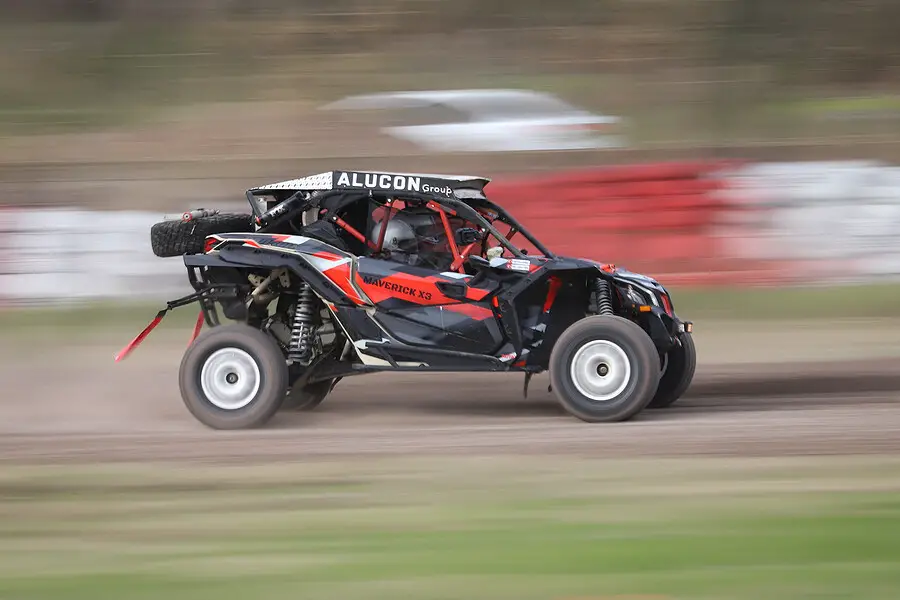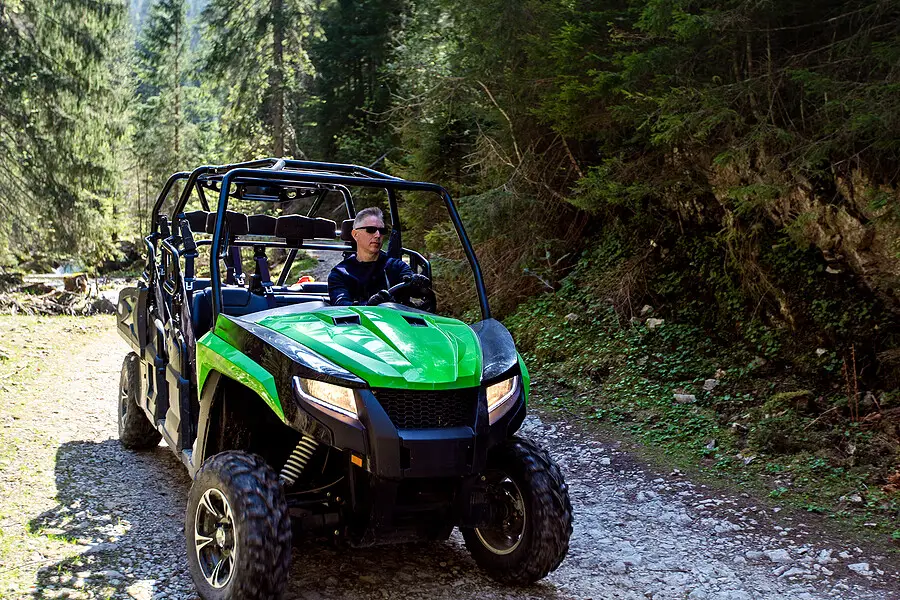Ever have an incident where your UTV was hooked to a hitch to tow only to find out the hard way that the weight is too much for the job? Talk about a bad day especially considering that it may have been prevented simply by knowing the difference between dry weight, wet weight and gross weight. Let’s talk about UTV side-by-side four wheeler weights, types and sizes to help prevent this issue from happening to you!

Understanding what effects UTV weights
There are 3 different types of UTV weight measurements and a few factors that determine these weight types. The first is a DRY WEIGHT which refers to how much the UTV weighs with an empty tank, no fluids or oils, no passengers, no cargo and nothing added to the four wheeler’s manufactured state. This is really a “dry” measure as it literally reflects the bare minimum a UTV can weigh but of course it won’t actually run unless its “wet” or filled with the proper fluids it needs to function. Below we will talk more about the different types of UTV and overview how the weight differs for each.
Secondly, lets look at the WET WEIGHT or what is better defined as the weight of the UTV with gas and all the necessary fluids needed to function. Now this weight can be a little tricky as fluid levels can vary in any UTV, especially gas, so be sure to be mindful of this factor when calculating your UTV’s wet weight.
Thirdly, there is the weight that reflects a UTV’s maximum towing capacity which includes passengers at top weight, stored cargo at max weight, fluids and overall UTV weight. This is known as the GROSS WEIGHT of the UTV four wheeler and is the most important weight to consider for towing your UTV. Also understand that the gross weight is different from the payload as the gross weight considers payload and adds the wet weight to it in order to get the overall “gross” of the UTV’s weight.
Breaking it down by types
So weight has the different factors previously discussed but theres also some variations in the size of the UTV based on type. Next we will look at the 4 main types of UTV four wheelers and map out some of the weight differences there in.
SPORT UTV
One type is the Sport UTV. Sport UTVs are primarily for those seeking adventure with speed and off road performance at the top of the wish list. The weight typically varies from 1200 to 1400 pounds leaving room for agility with stability particularly on the more challenging surfaces. These are typically carrying 2 passengers at top speeds of 70 to 80 mph. Couple in a towing capacity of up to 2000 pounds and you have a pretty nice range of things you can accomplish with this style UTV.

***Please keep in mind that these are approximate figures and the actual specifications can vary depending on the specific make, model, and year of the UTV***
| UTV Type | Weight (lbs) | Seating Capacity | Engine Size (cc) | Average Price (USD) | Towing Capacity (lbs) | Top Speed (MPH) |
|---|---|---|---|---|---|---|
| Sport UTV | 1,200 – 1,400 | 2 | 800 – 1000 | $15,000 – $25,000 | 1,500 – 2,000 | 70 – 80 |
| Utility UTV | 1,600 – 2,000 | 2 – 4 | 500 – 1000 | $10,000 – $20,000 | 2,000 – 3,000 | 45 – 60 |
| Recreation UTV | 1,300 – 1,800 | 2 – 4 | 700 – 1000 | $12,000 – $18,000 | 1,500 – 2,500 | 50 – 70 |
| Youth UTV | 600 – 800 | 2 | 150 – 300 | $4,000 – $8,000 | 200 – 500 | 25 – 35 |
Utility UTV
At about 1600 to 2000 pounds, the utility UTV is the heavier of all types of UTV four wheeler. Known as the workhorses of the UTV world, these 2 to 4 passenger side-by-side models are mainly used for completing some type of task from hauling to towing. Being that is used for the more heavy duty task it typically has a towing capacity that is in the neighborhood of 3000 pounds. Speed levels hover around 45 to 60 mph to focus on power but under more control.

Recreation UTV
Not to be mistaken for Sport UTVs, this version is kind of a hybrid of the Sport and Utility versions of the UTV. Recreational UTVs have more seating and towing capacity than the sport, giving you 1500 to 2500 pounds of towing capacity with an option to seat 2 to 4 people. It also goes a little faster than most Utility models with top speeds ranging from 50 to 70 mph. If you are looking for a go between that can promise some fun but also can do a task or two out in the field then this is the style to go with!

Youth UTV
These side-by-side style four wheelers are usually smaller, lighter and more centered around safety as it is the preferred type of UTV for your younger or more novice riders. At 600 to 800 pounds and top speeds ranging from 25 to 35 mph, the youth UTV specializes in an easier to handle riding experience putting safety and control above speed and performance. While they are smaller sized they are typically designed to fit 2 passengers though they anticipate the passengers will be a bit smaller than the riders of their sport, utility, and recreational counterparts.
So, while there are a number of factors that can determine the weight of a UTV, having a concept of what type of UTV it is and what the conditions are of the UTV when you are considering its weight can definitely help you feel comfortable before buying or towing. While the priority of most four wheeler owners is to get have some fun or get things done, it should be the priority of all four wheeler owners to be safe and respectful when their vehicle is in operation. With that in mind stay informed and stay safe!

